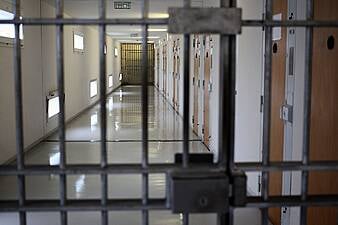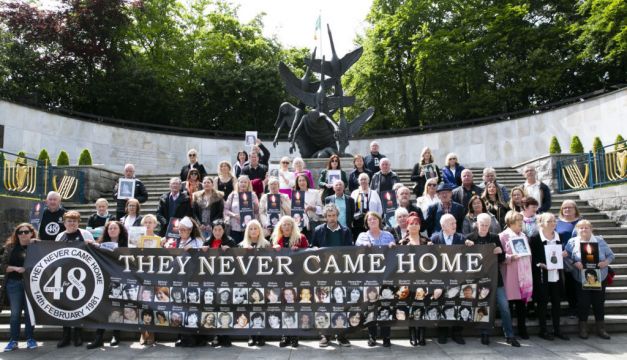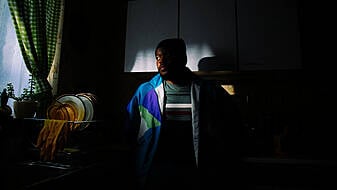The loss experienced by the families and loved ones of those who perished in the Stardust fire has “left an indelible mark on the suburb of Artane and the surroundings areas”, Coroner Dr Myra Cullinane has told the inquest jury.
In her address to the jury on Tuesday as the inquest enter a new phase following the completion of pen portraits of the 48 victims last week, Dr Cullinane said the community in Artane and its surrounds, which had such connection to the majority of the families who lost their children, had “borne a particularly heavy burden of grief”.
The coroner said the fire at the Stardust Ballroom on February 14th, 1981, in which 48 young people died, was the single most serious loss of life of one incident of this type in the history of the State, and remains so to this day.
On Wednesday, the jury will hear what she termed the “undisputed background facts” of the case. This will include details about the Stardust building, its location and structure, the position of all exits and means of escape, information about the ventilation and heating systems and information relating to the ownership and management of the Stardust.
She told the jury it is anticipated the inquest may last until the end of the year and said more than 300 witnesses and witness statements will be heard.
After reading aloud the names of the 48 victims, Dr Cullinane outlined to the 15-member panel the sequence of evidence which will be heard over the coming weeks and months.
Dr Cullinane said the purpose of her address was to give the jury a better understanding of their role in these inquests as the proceedings enter a new phase with the hearing of witness evidence, which will begin on June 7th.
The coroner gave a brief outline of the factual history in relation to the circumstances surrounding the deaths of the 48 people.
She said the Stardust had been open for three years as a venue for various music concerts and dances when the fire broke out in the early hours of Valentine’s Day, 1981.
Artane area
She said there were three venues on the site, including another function area known as the Lantern Rooms and a bar known as the Silver Swan.
There had been a disco dancing competition on Friday, February 13th, 1981, she said, and it was estimated that approximately 850 patrons were present.
The fire was noticed by patrons at the end of the night, and it spread quickly through the Stardust, resulting in the deaths of 48 people, most of whom died at the scene.
Dr Cullinane said the majority of those who died were from Artane and the surrounding areas, although some present were from Derry, Belfast and Cavan.
The coroner said an investigation was carried out by An Garda Síochána following the fire and a tribunal of inquiry took place in 1981. Inquests into the deaths were held in Dublin the following year, taking place over a period of five days in front of the then Dublin coroner.
She told the jury that in 2019, an application was made to the then-Attorney General, Seamus Woulfe SC, by the legal representatives of 42 of the bereaved families for fresh inquests and, as a result, he directed new inquests into the deaths of those killed in the fire.
She said the Attorney General had stated the findings of the original inquests were confined to the cause of death in respect of each of the deceased, with no reference to the surrounding circumstances and, as a result, he found there was an “insufficiency of inquiry” as to how the deaths occurred.
In directing the fresh inquests, the Attorney General also drew analogies with the Hillsborough case in England and said it was his view that where there is a disaster of such magnitude as occurred at the Stardust in 1981 there was an entitlement of the victims to the “public revelation” of the facts.
Dr Cullinane told the jury they do not have to concern themselves with the findings of any previous investigations as these are entirely new inquests.
She said in each of the deceased cases, a finding must be made in relation to four questions; the identity of the deceased, when the death occurred, where the death occurred and how the death occurred. The jury will hear witness evidence to assist them in those findings, the coroner added.
Criminal liability
She told the jury nobody can be blamed or exonerated at an inquest and a verdict cannot decide, or appear to decide, criminal or civil liability.
The coroner told the jury there may be a number of verdicts available to them, but this will not be clear until all the evidence has been heard.
A coroner’s jury is also entitled to make recommendations of a general nature, Dr Cullinane said, designed to prevent future deaths or proposals the jury consider necessary or desirable in the interest of public health or safety.
She told them they should not allow themselves to be influenced by any media coverage of the fire, either prior to the inquest or any further coverage that may be to come. She also told panel members not to discuss the proceedings with anyone outside their number.
“These are fresh inquests you must not allow yourself to be influenced by anything that has gone before or anything outside this courtroom.”
Dr Cullinane went on to address the scope of the inquest which, she said, is broader in this case than might apply in other inquests. She said the facts that are “undisputed” will be presented to the jury on Wednesday.
She said these facts will be presented to the jury by a member of the coroner’s legal team as these facts are established and accepted.
Dr Cullinane said other evidence will be dealt with by way of witness evidence, including matters in relation to staff training and fire planning, where and how the fire started, how and why the fire progressed, what the response was within the Stardust to the outbreak of the fire and the response of the emergency services.
She said where possible, evidence will also be heard as to the circumstances of how each death occurred and the medical cause of death.
In excess of 300 witnesses will be heard, Dr Cullinane said, and they will be grouped into categories.
This will be done in chronological order to assist the jury in making sense of events as they unfolded.
She said evidence will start with the staff and management of the Stardust, followed by the largest group, the patrons of the Stardust and members of the public who were in the area on the night in question, members of the emergency services and finally expert witnesses in pathology and fire.

Because these events occurred 42 years ago, some memories “may have faded” and so most witness evidence the jury will hear will be based on the statements made to gardaí shortly after the events, the coroner explained.
When the evidence is read, the witness will be questioned, first by the coroner’s legal team and then there will be the opportunity for other interested persons to further explore the evidence to assist the jury in their findings, Dr Cullinane said.
Due to the passage of time, many of the witnesses have since died and others may be unable to attend due to ill health or other circumstances, the coroner said and in those instances their depositions will be read to the jury, she said.
Dr Cullinane thanked the jury in advance for the very important task they are about to undertake. “Your service is of the utmost importance. I’m immensely grateful to you,” she added.







